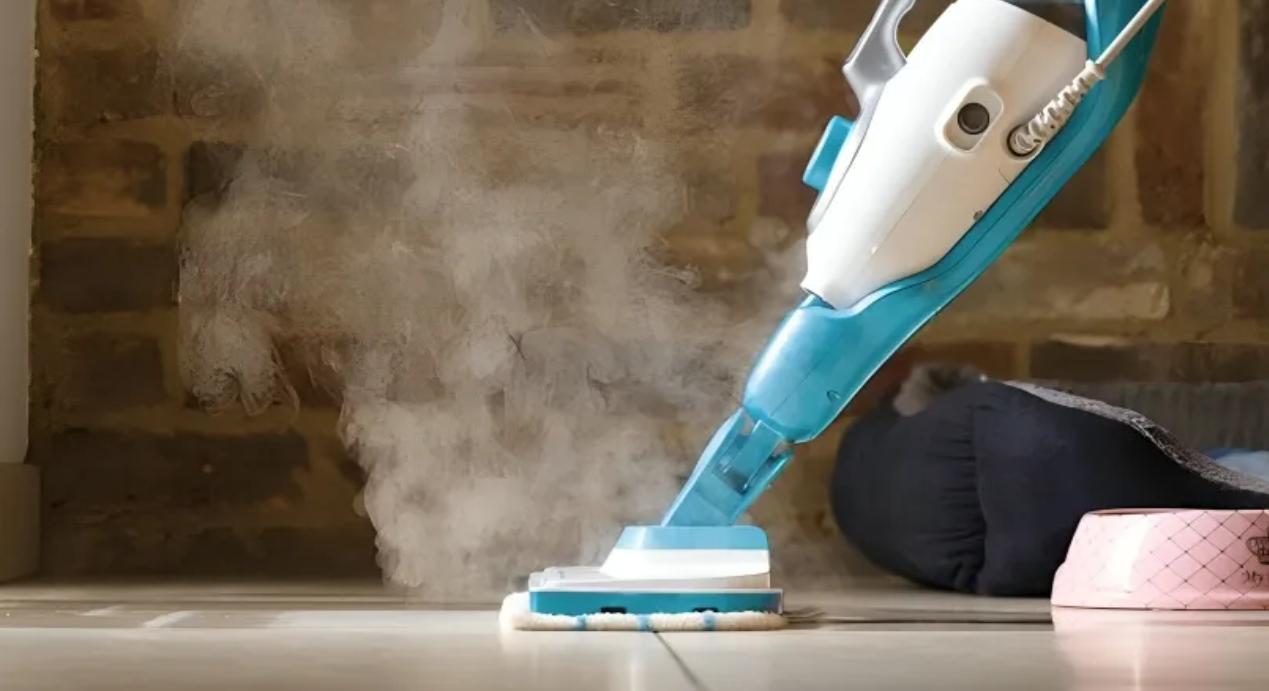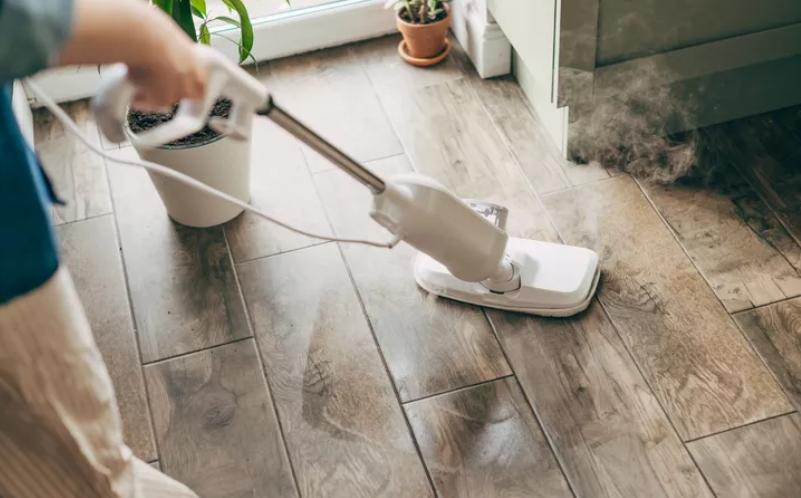What Is a Steam Mop: Definition and Functionality
A steam mop is a modern cleaning tool that uses steam to clean and sanitize floors. It offers a powerful, practical, and eco-friendly alternative to traditional mopping methods. Powered by electricity, a steam mop heats water to create steam, which effectively loosens dirt and kills bacteria on floors. This blog will explore what is a steam mop, how it works, its key features, and tips for effective use.

What Is a Steam Mop and How Does It Work?
The Technology Behind a Steam Mop
A steam mop generates steam to clean floors without the need for detergents or chemicals. At its core, the mop consists of a water tank, a heating element, and a microfiber cleaning pad. When you fill the tank with water and turn on the mop, the heating element heats the water to produce steam. The steam then passes through the cleaning pad and onto the floor, dissolving dirt and grime.
How Steam Mops Generate Heat and Steam
When you plug in the steam mop and turn it on, the heating element rapidly heats the water inside the tank, typically in a minute or two. The water reaches boiling point, producing steam. This steam travels through small channels to the mop head, where it is released just above the cleaning pad. The high temperature and pressure of the steam help break down tough stains and sanitize surfaces by killing germs.
Key Features and Benefits of Using a Steam Mop
Improved Cleaning Power with Steam
One of the primary benefits of a steam mop is its superior cleaning power. The high-temperature steam effectively breaks down tough dirt, grime, and grease that traditional mops struggle to remove. The heat melts away sticky substances and loosens debris, making it easier to wipe away with the mop pad. As a result, you achieve a deeper clean with less physical effort.
Chemical-Free Cleaning with a Steam Mop
Steam mops offer a significant advantage for those seeking a chemical-free cleaning solution. The steam itself is a natural disinfectant, effectively killing bacteria, viruses, and other pathogens without the need for harmful chemicals. This eco-friendly approach is not only better for the environment but also safer for households with children and pets. Additionally, avoiding harsh chemicals helps preserve your flooring and reduces the risk of allergies or skin irritations.
Versatility and Ease of Use
Steam mops are versatile tools that can be used on various types of hard floors, including tiles, hardwood, laminate, and vinyl. Some models even come with attachments for cleaning other surfaces, such as carpets, upholstery, and windows. Their lightweight design and ergonomic handles make them easy to maneuver around the house. Plus, the instant dry feature ensures that floors dry quickly, reducing the risk of slips and falls.
Cost-Effective Cleaning
While the initial investment in a steam mop may be higher than traditional mops, the long-term savings can be substantial. You no longer need to buy cleaning solutions, as the mop only uses water to generate steam. The reusable microfiber pads can be washed and used multiple times, reducing the cost of disposable pads. Over time, these savings add up, making steam mops a cost-effective choice for home cleaning.
Step-by-Step Guide: How to Use a Steam Mop Effectively
Preparing the Floor for Cleaning
Before using a steam mop, it’s essential to properly prepare the floor. Begin by sweeping or vacuuming the area to remove loose dirt, dust, and debris. This step prevents the steam mop from spreading particles around and allows it to focus on deeper grime and stains. Don’t forget to pay attention to corners, edges, and hard-to-reach spots for a more thorough and effective clean, ensuring every area is spotless.
Using the Steam Mop: A Step-by-Step Approach
Post-Cleaning Maintenance and Care

Common Mistakes to Avoid When Using a Steam Mop
Over-Wetting Floors and the Impact on Wood
One common mistake is over-wetting floors with the steam mop. Excess water and steam can damage certain types of flooring, especially hardwood. To prevent this, avoid holding the mop in one spot for too long and use the lowest steam setting suitable for your floor type. Always check the manufacturer’s recommendations for the appropriate amount of steam.
Using the Wrong Cleaning Solution
While it may be tempting to add cleaning solutions to the water tank for an extra boost, doing so can damage the steam mop and void its warranty. Steam mops are designed to work with water alone. Introducing chemicals can clog the device and render it ineffective. Stick to distilled water for optimal performance and longevity of your steam mop.
Conclusion
A steam mop is an effective and eco-friendly tool for keeping floors spotless. It uses steam to break down dirt and kill germs, offering a chemical-free cleaning solution. By understanding what is a steam mop and how to use it properly, as well as avoiding common mistakes, you can maximize its benefits and ensure your floors remain clean and well-maintained for years to come.
FAQ
Can I use a steam mop on all types of floors?
Steam mops are suitable for most hard floors, including tiles, vinyl, and sealed hardwood. However, they may not be ideal for unsealed or waxed wooden floors. Always consult the flooring manufacturer’s guidelines before using a steam mop.
How often should I clean my steam mop?
It’s best to clean your steam mop after each use. Empty the water tank, wash the cleaning pad, and wipe down the mop body. Regular maintenance ensures the mop functions efficiently and extends its lifespan.
What cleaning solutions can I use with a steam mop?
Only use distilled water in your steam mop. Avoid adding any cleaning solutions, detergents, or vinegar, as these can damage the device and may void the warranty. Steam mops are designed to clean effectively with steam alone.
